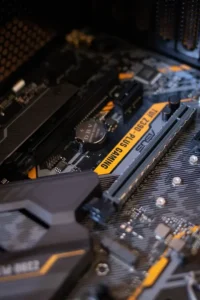The semiconductor industry is evolving faster than ever, with VLSI design trends 2025 highlighting innovations like advanced FinFET nodes, AI-powered chip design, and increasingly complex SoCs. As companies compete to deliver faster, smaller, and more efficient chips, they are actively seeking talent with specialized skill sets. Whether you’re a student, a fresher, or a working professional, enrolling in the right VLSI certification course can significantly accelerate your career in this high-growth field.
Here’s a curated list of ChipEdge’s top 5 VLSI Certification Courses in 2025 that are shaping the next generation of design and verification engineers.
-
Physical Design Certification Course
Ideal for: UG/PG students, freshers, and professionals looking to build a career in back-end VLSI
Duration: 6 Months (Students – Offline), 5 Months (Professionals – Online)
This course offers an in-depth understanding of the RTL to GDSII flow, one of the most critical phases in chip design. You’ll get hands-on experience with Synopsys tools like Design Compiler (DC), ICC2, and Prime Time—all widely used in the industry.
Key Features:
- Real-time exposure to 14nm FINFET libraries
- Work on 2 block-level projects simulating real chip implementation
- Participate in mock interviews with VLSI experts
- 100% placement support with resume building and interview prep
With physical design being a vital skill among the emerging VLSI design trends 2025, this course ensures you’re industry-ready from day one.
-
Design For Test (DFT) Certification Course
Ideal for: Freshers and professionals aiming for testing and validation roles
Duration: 6 Months (Students), 5 Months (Professionals)
DFT is all about making chips testable and reliable post-manufacturing. This course covers topics like scan insertion, JTAG, compression, and ATPG pattern generation using tools such as DFT Compiler, Tetramax, and VCS.
Key Features:
- Focus on 14nm FINFET testing techniques
- Complete lab sessions for hands-on practice
- Work on 1–2 block-level test design projects
- Mock interviews with senior DFT professionals
As chips grow more complex, DFT knowledge is becoming crucial. This course aligns with the increasing demand for robust and testable SoC architectures.
-
ASIC Design Verification Certification Course
Ideal for: Those aspiring to master functional verification using UVM
Duration: 6 Months (Offline for Students), 5.5 Months (Online for Professionals)
Verification remains one of the most resource-intensive and essential parts of the VLSI design cycle. This course is tailored to help you master SystemVerilog, UVM, and automation with Python scripting.
Key Features:
- Foundation in Linux, CMOS, and Verilog
- Projects: 2–3 protocol-based simulations
- Training with Synopsys VCS and Verdi
- Expert-led mock interviews to sharpen soft skills
In a world where 70% of chip design time is spent on verification, this course ensures you’re prepared for high-paying roles in top semiconductor companies.
-
RTL Design Certification Course
Ideal for: Professionals and freshers targeting front-end design roles
Duration: 5 Months
This course builds your capability in digital system design, emphasizing advanced RTL coding, linting, CDC checks, synthesis, and static timing analysis (STA). Using tools like Spyglass, DC, and Prime Time, you’ll gain valuable insights into chip behavior at the register-transfer level.
Key Features:
- Scripting with TCL for automation
- Exposure to 14nm FINFET nodes
- 1–2 hands-on projects with real-world digital design challenges
Topics include microarchitecture and logic equivalence checking (LEC)
In tune with VLSI design trends 2025, this course prepares you for design roles that demand precision, optimization, and speed.
-
Analog Circuit Design Certification Course
Ideal for: Engineers interested in analog and mixed-signal design roles
Duration: 5 Months
While digital gets most of the attention, analog design is indispensable in systems involving signal conditioning, power management, and high-speed communication. This certification offers core analog design techniques that apply across industries.
Key Features:
- Learn about data converters, instrumentation, and high-speed interfaces
- Curriculum crafted by analog domain experts
- Opportunities in a wide range of sectors, including medical devices and consumer electronics
Analog designers remain in high demand, with niche skills that are difficult to replace—making this course a valuable long-term investment.
Conclusion
With the ever-evolving landscape of VLSI design trends 2025, professionals and students need to stay updated and skilled. ChipEdge’s top 5 VLSI certification courses not only offer theoretical knowledge but also equip you with the tools and hands-on experience necessary for success in the real world.
From physical design and verification to RTL and analog domains, each course is designed with placement support, industry-standard tools, and expert mentorship to help you break into or advance within the semiconductor industry.













